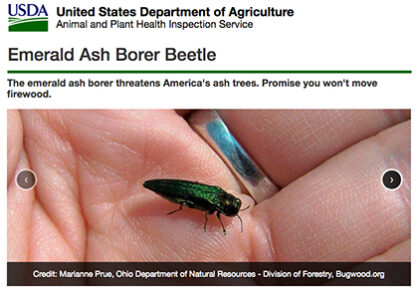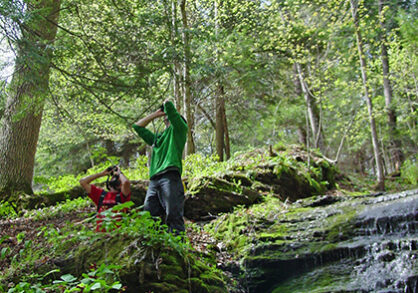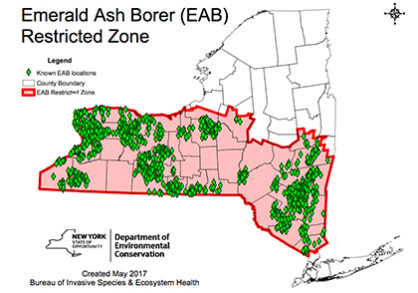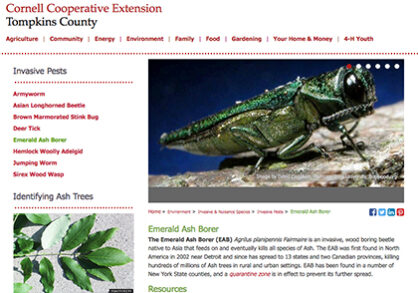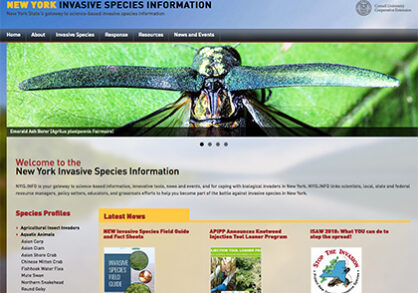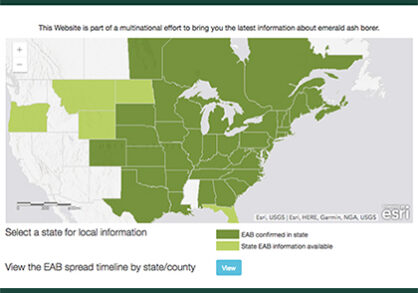Emerald ash borer (EAB), Agrilus planipennis Fairmaire, is a non-native beetle that was discovered in southeastern Michigan in 2002. The larvae feed on the inner bark of ash trees, disrupting the tree’s ability to transport water and nutrients and kills all native ash trees (Fraxinus spp.). Emerald ash borer is now found in 35 states and several Canadian provinces.
EAB was discovered in Tompkins County for the first time in 2018, including on the Cornell campus and within Cornell Botanic Gardens. We are actively managing EAB in ash tree collections within the F. R. Newman Arboretum through the use of systemic pesticides. Within our natural areas, ash trees make up 5-30 percent of the mature tree canopy. While selected ash trees are also being treated with pesticides, over 1,700 trees that posed a safety risk to developed infrastructure were removed between 2019-2023.
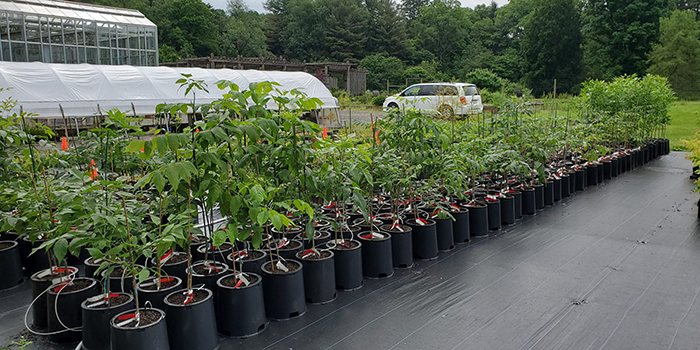
Conserving Ash
Cornell Botanic Gardens is also working on conserving white (Fraxinus americana), green (F. pennsylvanica), and black (F. nigra) ash through propagating lingering ash. Lingering ash are native, naturally occurring trees that stay healthy after nearby ash have overwhelmingly succumbed to EAB. Propagating lingering ash involves collecting scion (e.g. twig samples) from these trees, propagating rootstock, and then grafting the rootstock to the scion through a specialized grafting process known as hot callus grafting. Once grafted, the trees are grown in our nursery facility for two years before being planted out in field sites known as clone banks. The goal of the project is to plant 50 – 60 genotypes (e.g. genetically different individuals) with five replicates each (e.g. five clones) for a total of 250 trees for all three ash species. These trees will be protected from EAB with pesticide applications until they are large enough to be fully susceptible to EAB. At this point, the treatments will be suspended, and trees allowed to be infested by EAB. We will then determine their long-term resistance to EAB. Surviving trees and/or crosses of surviving trees will then be converted into a seed orchard, which will generate seed and eventually ash tree seedlings to ultimately restore green, white, and black ash to our forests.
What can you do?
Browse these recommended resources for more information and how you can help prevent the spread of Emerald Ash Borer.
USDA Website
Learn what to look for on ash trees by visiting the United States Department of Agriculture Animal and Plant Health Inspection Service website.
Report Suspect Trees
To report ash trees suspected to be infested with EAB in New York, visit the Dept. of Environmental Conservation EAB site.
Location Map
View a map of known EAB locations and quarantined counties in New York State.
Emerald Ash Borer in Tompkins County
Information provided by the Tompkins County Cooperative Extension
New York State Invasive Species Information
Find the latest updates and sources of information on the New York State Invasive Species Information Clearinghouse.
Emerald Ash Borer Information Network
A National Resource on Emerald Ash Borer
